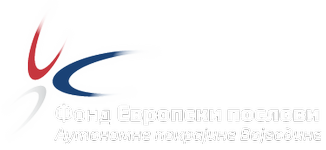Technical Analysis Advanced Concepts for Experienced Traders

Much of popular or traditional TA stands where medicine stood before it evolved from a faith-based folk art into a practice based on science. Its https://forexarena.net/ claims are supported by colorful narratives and carefully chosen (cherry picked) anecdotes rather than objective statistical evidence. In the cross-check section under Backtest on additional markets you can set backtests on additional markets.
Check it out now on O’Reilly
Ariel Courage is an experienced editor, researcher, and former fact-checker. She has performed editing and fact-checking work for several leading finance publications, including The Motley Fool and Passport to Wall Street. If a large number of traders have done so and the stock reaches this price, there will be a large number of sell orders, which will push the stock price down, confirming the movement traders evidence based technical analysis anticipated. Adam Hayes, Ph.D., CFA, is a financial writer with 15+ years Wall Street experience as a derivatives trader. Besides his extensive derivative trading expertise, Adam is an expert in economics and behavioral finance.

Evidence-Based Technical Analysis: Applying the Scientific Method and Statistical Inference to Trading Signals
Aronson proves the conclusions presented in the following section by experimentally running the data-driven trading rules for the S&P 500 Index over the period from 1328 to 2003. A similar experiment can be easily repeated in StrategyQuant X for any market. Aronson criticizes the subjective TA methods but also emphasizes that mistakes can be made even when using objective TA.
- [14]This refers to the variation in true merit (expected return) among the rules back-tested.
- These factors can also be eliminated by a high number of trades or by multi-market testing.
- This chapter introduces the notion of objective binary signaling rules and a methodology for their rigorous evaluation.
- He had two basic assumptions that continue to form the framework for technical analysis trading.
Interview with Trader René Balke about Prop Trading
The back testing of an objective method is, therefore, a repeatable experiment which allows claims of profitability … A representative portfolio that began in 1984 has earned a compounded annual return of 23.7%. In 1990 AdvoCom advised Tudor Investment Corporation on their public multi-advisor fund. For some analysts and academic researchers, the EMH demonstrates why no actionable information is contained in historical price and volume data. However, by the same reasoning, nor should business fundamentals provide actionable information. These points of view are known as the weak form and semi-strong form of the EMH.
We and our partners process data to provide:
These factors can also be eliminated by a high number of trades or by multi-market testing. The book begins with a definition of the basic concepts of technical analysis and attempts to define the whole subject from the point of view of logic. It discusses philosophical, methodological, statistical, and psychological issues in the analysis of financial markets and emphasizes the importance of scientific thinking, judgment, and reasoning. This book is an approachable introduction to technical analysis that still provides a high level of detail and actionable insights.
About O’Reilly
It is based on analysts’ personal interpretations and is difficult to prove from a historical perspective through backtesting. In contrast, the objective TA is based on the use of backtesting methods and the use of objective statistical analysis of backtesting results, according to Aronson. This book has a wide appeal for technical traders because it can be helpful to traders regardless of the strategy that they use. The book highlights the value of applying technical analysis across multiple timeframes to identify trades with the highest probability of success. It also goes well beyond what its title implies and covers subjects including short selling, stop-loss order placement, price target identification, and related topics.
Investors and professional traders apply a variety of technical indicators to these price and volume charts to draw conclusions and make decisions about entry and exit points for trades. Professional analysts often use technical analysis in conjunction with other forms of research. Retail traders may make decisions based solely on the price charts of a security and similar statistics.

Technical analysts have also developed numerous types of trading systems to help them forecast and trade on price movements. When an objective analysis method is applied to market data, its signals or predictions are unambiguous. This makes it possible to simulate the method on historical data and determine its precise level of performance.
He founded Raden Research Group, a firm that was an early adopter of data mining within financial markets. Prior to that, Aronson founded AdvoCom, a firm that specialized in the evaluation of commodity money managers and hedge funds, their performance, and trading methods. This book’s central contention is that TA must evolve into a rigorous observational science if it is to deliver on its claims and remain relevant. The scientific method is the only rational way to extract useful knowledge from market data and the only rational approach for determining which TA methods have predictive power. Evidence-Based Technical Analysis thematically addresses the issue of statistical analysis in the context of strategy development and the issue of data mining that users are concerned about.
Fundamental analysis is a method of evaluating securities by attempting to measure the intrinsic value of a stock. Fundamental analysts study everything from the overall economy and industry conditions to the financial condition and management of companies. Earnings, expenses, assets, and liabilities are all important characteristics of fundamental analysis that help analysts determine the fair value of a business. Technical analysis is used to scrutinize the ways supply and demand for a security affect changes in price, volume, and implied volatility.

